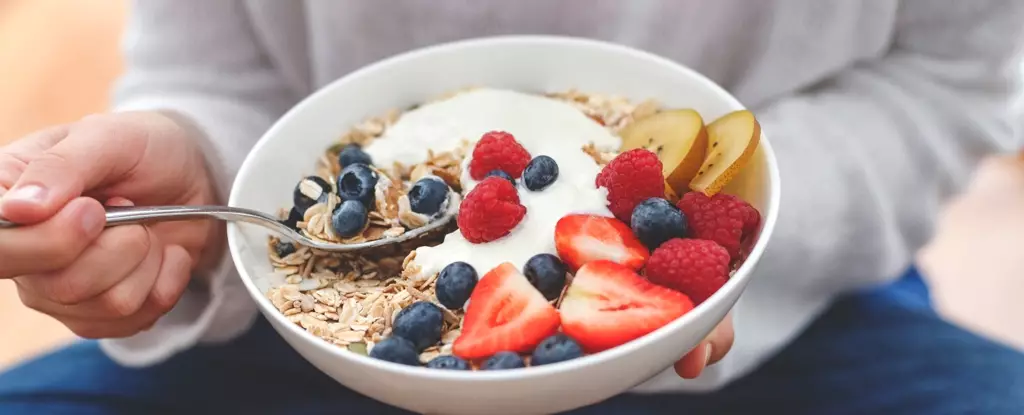Recent advances in nutritional science have illuminated the vital connection between our gut microbiome and overall health. Researchers have begun to unravel the complex ecosystem within our digestive tract, leading to what can only be described as a revolution in how we understand nutrition. Among the plethora of discoveries, dietary fiber has emerged as a significant player—akin to the coveted protein in macronutrient discussions. Yet, as we dive deeper into the science of fiber, new findings suggest a more nuanced approach is necessary.
A wealth of studies underscores the potential of dietary fiber to support health, but not all fibers wield equal influence. Recent research, particularly a mouse study from the University of Arizona (UA) and the University of Vienna, has pinpointed beta-glucan, a type of fiber predominantly sourced from oats and barley, as a standout facilitator of metabolic health.
Beta-Glucan: The Champion of Fibers
What makes beta-glucan so exceptional? The 2024 study indicated its unique effects on blood sugar control and weight management in mice subjected to high-fat diets. Remarkably, it was the only fiber type tested that demonstrated significant reductions in body fat and weight within just 18 weeks. This revelation challenges the traditional perception of fiber as a one-size-fits-all solution. Instead, it underscores the critical need to tailor dietary recommendations based on specific fiber types.
While various fibers—such as wheat dextrin, pectin, resistant starch, and cellulose—shape the microbiome’s flora, the majority failed to deliver the same weight loss benefits as beta-glucan. This divergence raises essential questions about the fiber supplements flooding the market and whether they live up to their health claims. Frank Duca, a biomedical scientist at UA, emphasized the need for more refined guidance in the fiber realm, stating, “We wanted to know what kind of fiber would be most beneficial for weight loss and improvements in glucose homeostasis.”
The Diversity of Dietary Fibers
Understanding that dietary fibers are not created equal is paramount. In the vast landscape of fibers, we have soluble types like beta-glucan, which dissolve in water and are easily fermented by gut bacteria, and insoluble fibers like cellulose that serve a different purpose—mainly to bulk up stool and promote regularity. This inherent diversity necessitates a more informed approach to dietary fiber intake, especially given that most Americans consume significantly less fiber than recommended, averaging less than 15 grams daily when the goal should be 25-30 grams.
As the appetite for fiber-rich foods grows, the industry has been quick to innovate, producing fiber-infused products that promise health benefits. However, dietary choices must align with scientific understanding; simply increasing fiber isn’t sufficient if the fiber type does not confer the desired benefits.
The Mechanisms Behind Weight Loss
The dose-dependent relationship between beta-glucan intake and fat reduction cannot simply be attributed to glucometabolic factors; the research illuminates a fascinating interplay between gut bacteria and metabolic processes. Notably, the study indicated significant increases in the population of Ileibacterium, linked to weight management, among mice consuming beta-glucan. This relationship hints at a future where dietary strategies may be optimized through the targeted use of specific fibers.
The production of butyrate—a short-chain fatty acid generated during fiber fermentation—also plays a crucial role in this context. Studies have shown that butyrate influences not just appetite-regulating hormones like GLP-1 but also contributes to gut barrier integrity and overall metabolic health. Duca and his colleagues propose that the implications of butyrate extend beyond gut peptides, with potential benefits in various physiological processes such as liver health and inflammation reduction.
A Call for Further Research
While the findings from these studies provide a promising glimpse into the potential benefits of beta-glucan, a cautionary note is warranted. The current research, while groundbreaking, was conducted on mice—a model that while helpful, doesn’t always translate directly to human physiology. As we stand at the cusp of a nutritional paradigm shift, there is a pressing need for more extensive studies, including human trials, to validate these findings and potentially reshape dietary guidelines and recommendations.
The nuanced understanding of fiber not only speaks to the importance of digestion but emphasizes the broader implications for health strategies in obesity and metabolic disorders. Moving forward, both consumers and professionals in the nutritional field must advocate for a more discerning approach to fiber consumption that prioritizes quality over quantity. In this journey, beta-glucan may very well lead the charge as a formidable ally in the quest for better health.


Leave a Reply